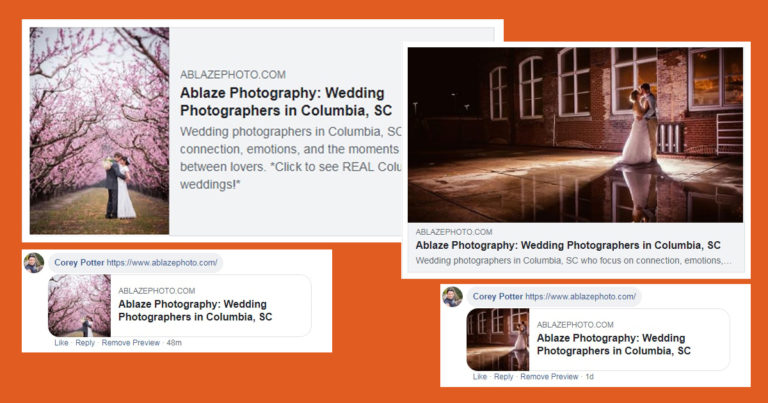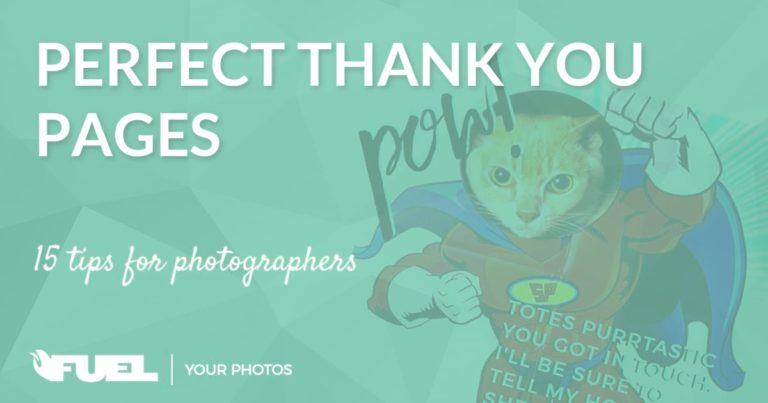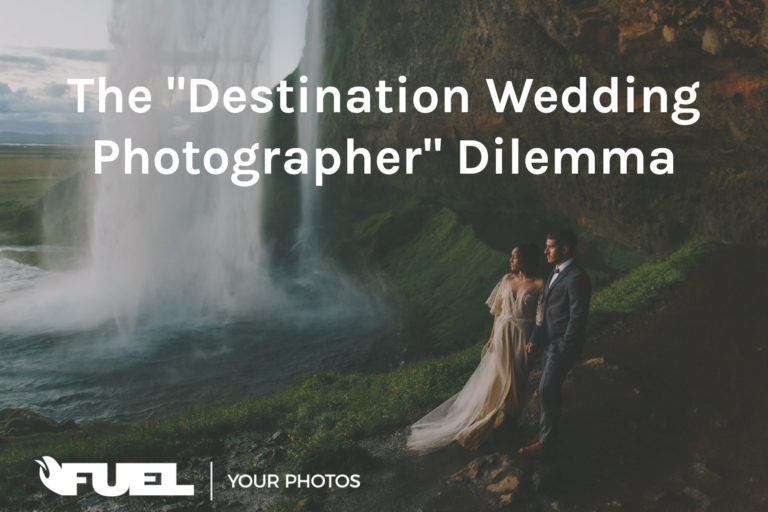SEO Strategies for Multiple Specialty Websites

Trying to rank for multiple photography specialties is one of the more difficult SEO situations that photographers often face. The core principles behind SEO are becoming the most authoritative and relevant source of information for your niche. This task is not easy. Attempting to do this for multiple topics is going to be a struggle to make the best outcome from the least worst options.
An Overview of the Possibilities
These are the typical situations we see:
- Photographer site with single specialty. All supporting content is aligned with the main topic.
- Photographer site with multiple specialties. Homepage content is biased towards main topic. Internal page for secondary specialty.
- Separate websites for each specialty using separate brands.
- A homepage targeting general terms “[city] photographer” w/ multiple specialties linked to.
- Separate websites for each specialty using same brand.
- A homepage “splash” landing page that pushes visitors to choose which specialty they’re interested in.
These are ranked very roughly in order from best to worst, but there are many variables that can change these rankings for individual situations.
A Primer on Entities
To get a brief understanding of entities, we can look at a Google patent from 2013. It defines an entity as:
a thing or concept that is singular, unique, well-defined and distinguishable. For example, an entity may be a person, place, item, idea, abstract concept, concrete element, other suitable thing, or any combination thereof.
https://patents.google.com/patent/US9477759
For our use, the main entity in question will be your Brand. This is either going to be your name or the name of your photography business. Google looks for information on the internet: backlinks, mentions, citations, structured data, etc while attempting to figure out what terms are most relevant for your brand.
You can easily see this by pasting text into the Google Natural Language API Demo.
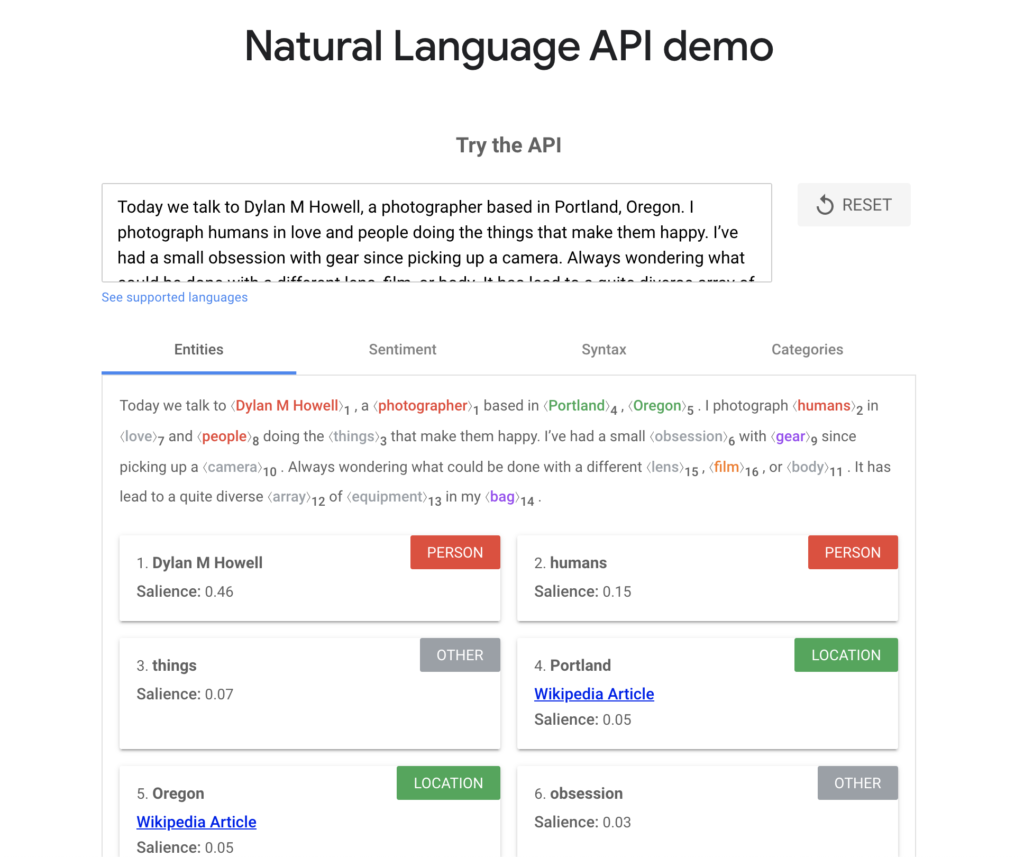
We’ll do a deep dive into entities, how Google creates them, what information goes into those machine learning models, etc soon. This should be enough of a basic understanding of entities for today.
What this Means to Us
Google is constantly trying to define your brand. They’re trying to find which terms are most relevant. If they constantly see “Dylan M Howell” referenced near “wedding” and “photographer”, they’re getting supporting information that Dylan M Howell is a wedding photographer.
If they see links from wedding photography related sites, their signals are going to show that there is significance, or a relationship, between “Dylan M Howell” and “wedding”.
To get overly technical, Google is creating a vector for the brand entity by looking at how it fits into their mathematical understanding of language.
If they see mixed signals, some links about childbirth, some about pet photography, some about family blogging, and others about wedding photography; they won’t have as clear of an understanding to the main topic most closely associated with the entity.
This is where the idea of running separate websites, but using the same brand, becomes imperfect.
A Great First Check
It’s always a great idea to first study the SERPs (search engine results pages) for the queries you’re targeting.
You want to disregard the high authority directory sites or photography blogs (the knot, wedding wire, yelp, clickin’ moms, etc.) and look at which photographer pages are ranking.
Are they ranking with internal pages “/specialty-here” or the homepage?
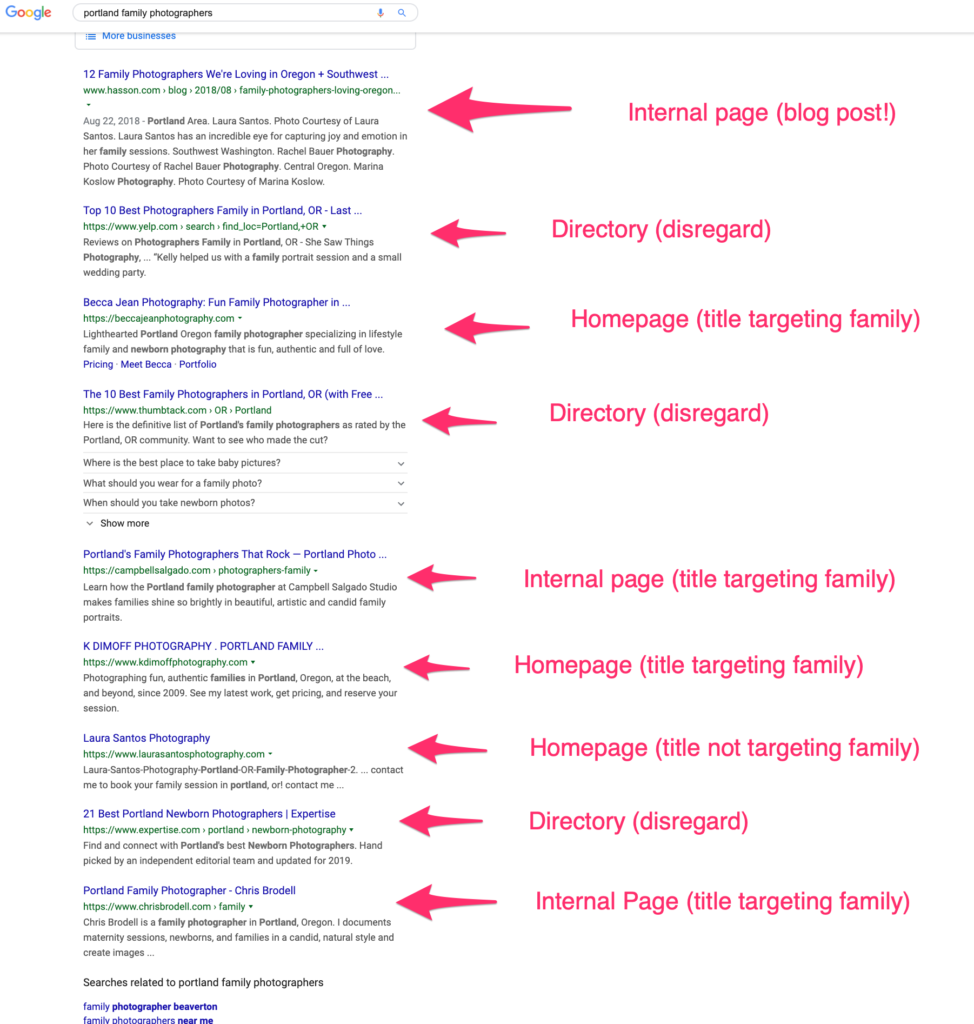
If they’re ranking with the homepage, is the page title targeting that one specialty? What about the content on their page?
If you’re seeing a lot of internal pages, the term is likely to be less competitive. This is a good sign if that’s the path you’d like to take.
If you don’t see any internal pages ranking, you’re probably going to have to optimize your homepage for this specialty if you want to rank.
One Domain – One Specialty
This is the easiest to setup and removes any of the complications mentioned in the article. It requires the photographer to pick the specialty that they’re best at, leverage their strengths, and give up on the idea of “doing it all”.
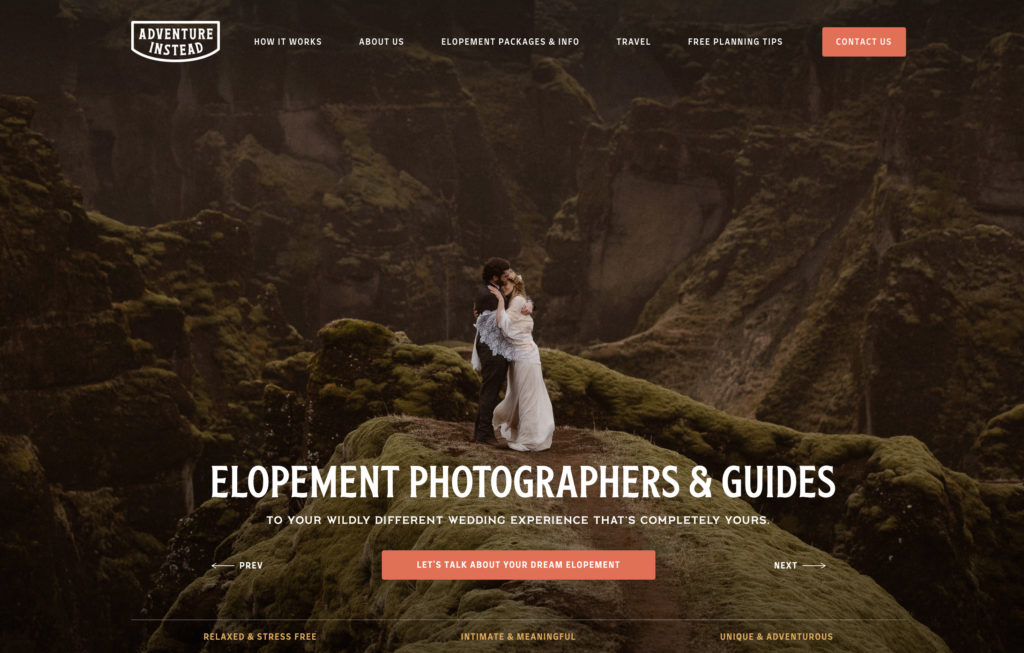
It allows the content on the website to maintain topical relevance. It makes it easy for Google to associate a main topic for the entity.
One Domain – Two Specialties
This is the second most common situation. Photographers typically have a main specialty that is the majority of their revenue and then a secondary specialty. Examples would be weddings and portraits, families and newborns, or seniors and commercial.
This can become an SEO challenge when Google is choosing to rank homepages for queries.
If Google ranks your homepage for the secondary query, but the title and meta description aren’t fully optimized for that query, you’ll see poor clickthrough rate. This can dramatically lower the number of clicks you’re seeing for the ranking position.
Further, if your competition has an optimized homepage for the topic, they are likely to not only rank higher, but have increased CTR.
When your internal page ranks for the term, it might be ranking 20+ positions worse than your homepage due to authority factors alone. The content relevance alone may not be enough to outrank the competition.
Here is a somewhat rare example of content on an internal page being so well done that it does outrank homepages: https://shannonreecejonesphotography.com/maternity-photography/
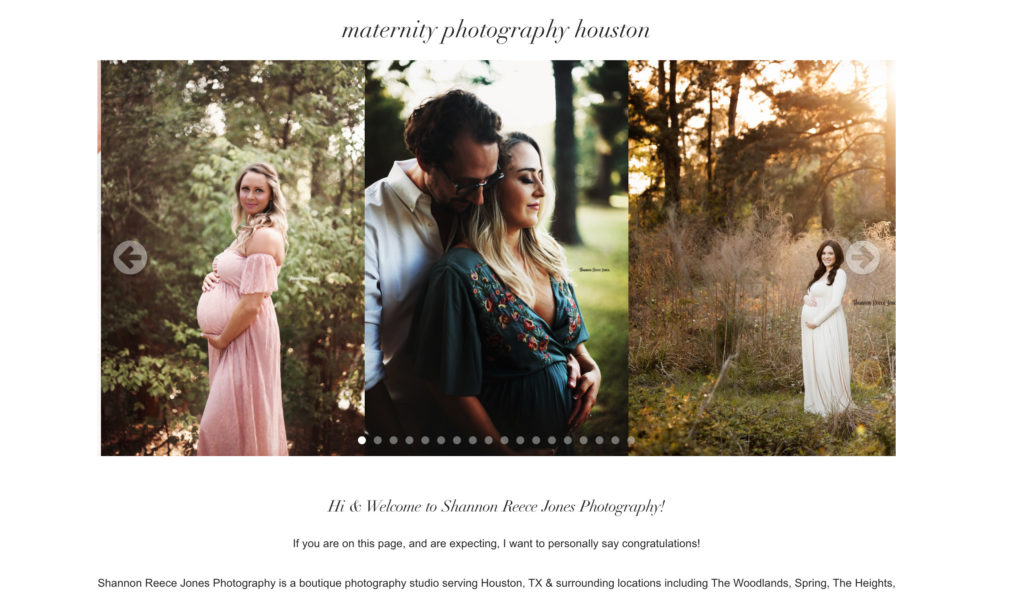
From a branding and marketing perspective, you’ll also have the challenge of mixing your messaging to two audiences. Competing sites targeting one specialty can have much tighter copywriting.
This setup still has a benefit over multiple domains in that general link building to the homepage can improve rankings for all specialties (by raising overall authority of the domain).
One Domain – General Terms on Home
This often works if your specialties are less niche and more general. Your goal is to rank the homepage for terms like “[city] photographer”. Then you can have internal pages for your specialties, like: headshots, commercial, real estate, etc.
This is often useful when there isn’t a single specialty that is the majority of your revenue. It also works out well when a single specialty doesn’t offer enough search volume to be a worthwhile homepage target on its own.
Example that targets “Orlando Photographers”

https://hughesfioretti.com/
Two Domains – One Brand
If you have one website: dylanmhowell-weddings.com
And another: dylanmhowell-portraits.com
You’re not helping clear up the entity confusion, but you are splitting your efforts on building authority to two domains.
Google is likely to confuse the two, depending on the content and authority differences. If dylanmhowell-portraits.com goes viral and gains hundreds of additional links, there are likely scenarios it would outrank dylanmhowell-weddings.com for wedding related terms.
The most common results from this setup is that the primary specialty site gets the most attention and backlinks. Over time, Google associates the primary specialty with the brand entity and choses to show it for branded queries and head terms.
There will then be an issue with the Google My Business profile. If you create one for the brand, which category do you optimize for? You’re very likely to run into suppression issues if you attempt to create two GMB profiles for the separate domains.
Two Domains – Two Brands
This setup has become more popular as photographers realize that a website that often going to convert at a much higher rate when it focuses on a single topic. It allows the marketing to be much more clear to the user.
From an SEO perspective it can create a few challenges.
First, the number of websites you have to build and maintain has doubled. Second, if you’re attempting to promote the two brands equally you will need to double your marketing efforts. You’ll need to write twice as many blog features, do twice as many outreach emails, run two sets of social media accounts, build links and citations to for two separate brands and sites.
If you want to have separate Google My Business profiles, you’ll need to have separate addresses or one is very likely to be suppressed in map results.
You will also need to be careful with how you separate your name from the two brands. There are cases where Google has treated the brands as the personal entity for the photographer.
An example: Joe Smith is a commercial photographer. He has a wedding brand called Whimsical Weddings and a senior portrait brand called Rad Portraits. Over time, once google is able to see that online mentions, reviews, and backlinks are all referencing Joe Smith.. They’re likely to start showing the commercial photographer site that is branded as his name instead of the wedding or portrait site that he wants to show up in search for those queries.
The benefit of this setup is that you’ll be able to achieve rankings for both specialities, even if both are in more competitive niches.
Another situation where this works well is if the messaging or branding for your two specialties are far different, like pet photography and boudoir.
A Splash Page
If anyone grew up on the early web, you’ll probably remember those landing pages on every site that just said “enter here”.
This is a somewhat common solution to the problem of having multiple specialties. You ask your visitor to pick “specialty A” or “specialty B” right when they land on your site.
From an SEO perspective, you’re wasting the authority of your most important page. The content and user experience of these splash pages is often terrible. They simply won’t rank in competitive markets without massive brand authority.
We don’t recommend these as a solution to the multiple specialty problem as they offer the same drawbacks as pushing specialties to internal pages, without the benefit of allowing the homepage to concentrate on the primary specialty.
Our Suggestion
If at all possible, we suggest limiting your website to one main specialty.
We know that isn’t always possible. If that’s the case, you need to look at the potential revenue from each specialty and decide their relative importance.
Then it’s a decision between creating internal pages for those specialties or spending time and money on creating a separate brand and website.
When you’re optimizing, don’t forget that Google is very likely to show your homepage even when you have a more optimized internal page. (Google is a bit of a honey badger)
Still have questions? Feel free to ask in the Fuel Your Photos Facebook Group. Want to do a deep dive on SEO? Join our course here.


